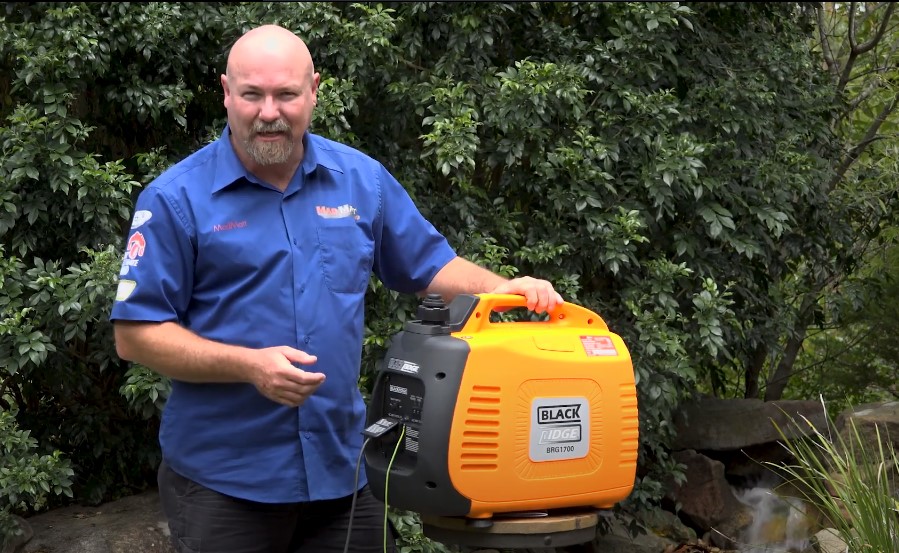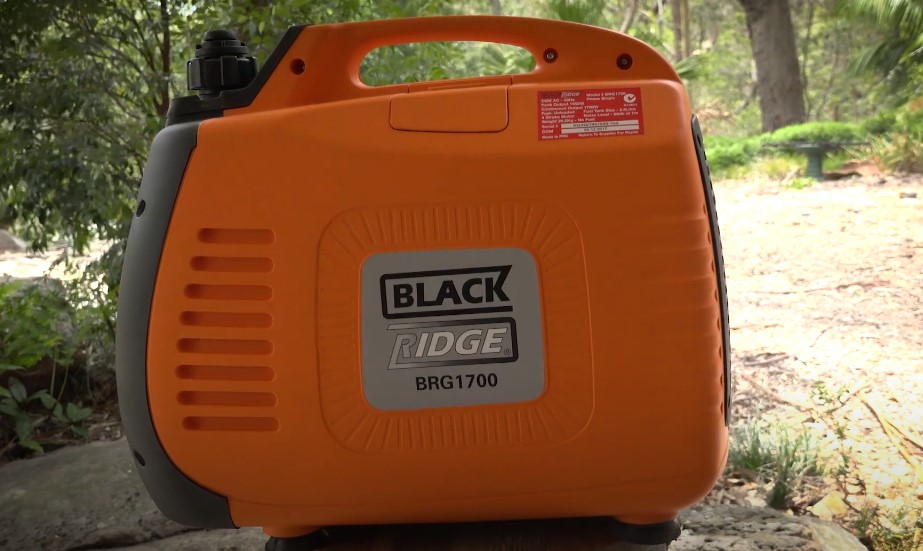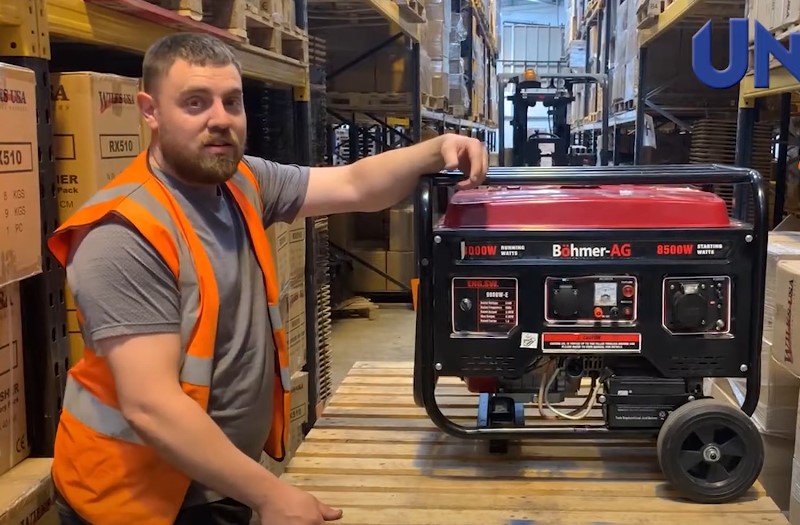Physical Address
304 North Cardinal St.
Dorchester Center, MA 02124
Physical Address
304 North Cardinal St.
Dorchester Center, MA 02124

Generators are vital during power outages, but even dependable models like Blackridge can encounter issues.
Understanding common Blackridge Generator Problems can save you time, money, and unnecessary stress.
From starting difficulties to output issues, these problems often have simple fixes that anyone can handle.
Let’s explore the ten most frequent concerns and how you can easily resolve them!
Blackridge generator problems are usually easy to fix with some basic steps.
Common issues include the generator not starting, low power output, or strange noises during operation.
Check the fuel levels, clean the air filter, and inspect the spark plug for quick troubleshooting. Don’t worry, most problems can be solved in minutes!

Cause
The most common reasons a generator fails to start are related to fuel or the ignition system.
The fuel tank might be empty, the fuel could be old and degraded, or the fuel valve might be closed.
It could also be a dead battery (on electric start models), a fouled spark plug, or the choke being in the wrong position.
Fix
First, ensure there’s fresh gasoline in the tank and the fuel valve is open. Check the oil level and top it up if it’s low.
Set the choke to the “START” or “CLOSED” position for a cold engine. If it still won’t start, inspect the spark plug.
Clean it if it’s dirty or replace it if it’s fouled or damaged. For electric start models, make sure the battery is charged.
Cause
A generator that can’t stay running is often starved of fuel or air.
This could be due to a clogged fuel filter, a dirty air filter, or a blocked fuel line. Old, stale fuel can also create gummy deposits that obstruct the carburetor.
Additionally, the low-oil sensor might be malfunctioning or triggered by a genuinely low oil level, causing an automatic shutdown.
Fix
Start by checking the oil level; if it’s low, adding more oil might solve the problem instantly.
Next, inspect the air filter. Clean it if it’s dusty or replace it if it’s saturated with oil or dirt.
If the issue persists, you may need to replace the fuel filter or clean the carburetor. Draining the old fuel and refilling with fresh gasoline is also a crucial step.
Read Also: 10 Common Bohmer Generator Problems (With Easy Fixes)

Cause
This issue often stems from a tripped circuit breaker on the generator itself. It’s a safety feature designed to prevent overload.
Another common cause is a faulty alternator or a bad capacitor. The GFCI (Ground Fault Circuit Interrupter) outlets could also be tripped.
Sometimes, the connected appliance’s cord is the culprit.
Fix
First, check the generator’s circuit breakers and reset them if they have tripped.
Also, press the “RESET” button on any GFCI outlets. Try plugging in a different device to rule out a problem with your original appliance or extension cord.
If these simple steps don’t work, the alternator or capacitor might need professional testing and replacement.
Cause
Overheating is typically caused by overloading the generator—asking it to produce more power than it’s rated for.
Other causes include a blocked air intake, preventing proper cooling, or a low or incorrect type of oil.
Running the generator in a poorly ventilated area or in direct, intense sunlight can also contribute to the problem.
Fix
Reduce the number of devices plugged into the generator to ensure you’re not exceeding its wattage capacity.
Make sure the generator is in a well-ventilated, shaded area with at least a few feet of clearance on all sides for airflow.
Check the oil level and quality, and clean the air filter and cooling fins to remove any blockages.
Cause
The primary cause of surging is a clogged carburetor, which happens when old fuel leaves behind sticky residue.
This obstructs the tiny jets inside, leading to an uneven fuel-to-air mixture.
Other potential causes include a dirty fuel filter, clogged fuel lines, or water in the fuel tank, all of which disrupt the steady flow of gasoline.
Fix
Try adding a carburetor cleaner to the fuel tank as a first step. If that doesn’t resolve the issue, you will likely need to clean the carburetor manually.
This involves removing it, disassembling it, cleaning the jets and passages with a specialized solvent, and then reassembling it.
Also, drain any old fuel and replace the fuel filter.
Cause
Fuel leaks most commonly originate from cracked or hardened fuel lines, which degrade over time due to exposure to gasoline and the elements.
Other sources can be a damaged fuel tank, a faulty fuel valve (petcock), or a cracked carburetor bowl.
The gaskets and seals within the fuel system can also wear out and fail.
Fix
Turn off the generator and the fuel valve right away. Carefully inspect the fuel lines, fuel tank, and carburetor area to pinpoint the source of the leak.
Replace any cracked or brittle fuel lines this is a common and inexpensive fix.
If the leak is from the carburetor, you may need to replace the bowl gasket. A damaged fuel tank will require replacement.
Cause
Blue or white smoke usually means the engine is burning oil, which can be caused by overfilling the crankcase with oil, worn piston rings, or a failed head gasket.
Black smoke indicates that the engine is running “rich,” meaning the fuel-to-air mixture has too much gasoline.
This is often due to a stuck choke or a dirty air filter restricting airflow.
Fix
If the smoke is blue or white, first check the oil level. If you’ve overfilled it, drain the excess oil.
If the level is correct, the problem may be internal and require a mechanic. For black smoke, check that the choke is in the “RUN” or “OPEN” position.
Then, inspect and clean or replace the air filter to ensure the engine is getting enough air.
Cause
The most straightforward cause is an old or dead battery that can no longer hold a charge.
However, the problem could also be with the generator’s charging system itself. This system, known as a charging coil or stator, may have failed.
Another possibility is loose or corroded battery terminals, which prevent a good connection.
Fix
First, clean the battery terminals with a wire brush and ensure the connections are tight.
Try charging the battery with an external battery charger. If it still won’t hold a charge, the battery itself needs to be replaced.
If a new battery also fails to charge while the generator is running, the charging coil likely needs to be tested and replaced by a service technician.
Cause
Excessive vibration is often caused by the generator being placed on an uneven surface.
It can also result from loose mounting bolts that hold the engine or alternator to the frame.
A sudden increase in noise could be due to a loose or damaged muffler or a problem with internal engine components, such as a worn bearing.
Fix
Ensure the generator is operating on a flat, solid surface.
Shut down the unit and, once it’s cool, check and tighten all visible bolts, especially those mounting the engine, alternator, and muffler to the frame.
If tightening bolts doesn’t solve the issue or if you hear internal metallic noises, stop using the generator and have it inspected by a professional.
Cause
A generator may consume fuel too quickly if it is consistently overloaded, forcing the engine to work harder than necessary.
A rich fuel mixture, often caused by a dirty air filter or a misconfigured carburetor, can also lead to poor fuel economy.
Lastly, a small, hard-to-see fuel leak might be wasting gasoline while the generator runs.
Fix
Check the total wattage of the devices you are running and ensure it’s well within the generator’s rated capacity.
Clean or replace the air filter to improve the air-fuel mixture. Carefully inspect the entire fuel system for any signs of leaks.
If the problem continues, the carburetor may need adjustment or cleaning to restore proper fuel efficiency.
To reset most Blackridge generators, simply turn off all connected devices, then press the red or black circuit breaker button(s) located on the main panel until they click back into place.
This is often due to a tripped circuit breaker. Reset it. If that doesn’t work, the connected appliance might be faulty or the generator’s alternator could have lost its magnetism and needs to be “flashed.”
Most Blackridge generators use SAE 10W-30 oil for general, all-temperature use. Always check your user manual for the specific recommendation for your model.
A basic service, including an oil change and filter check, should be done after the first 20 hours of use, and then every 50-100 hours or at least once a year, whichever comes first.
No, never run a generator in the rain or on a wet surface, as this poses a serious risk of electrocution and damage to the unit. Use a specially designed generator tent or cover if you must operate it in wet conditions.